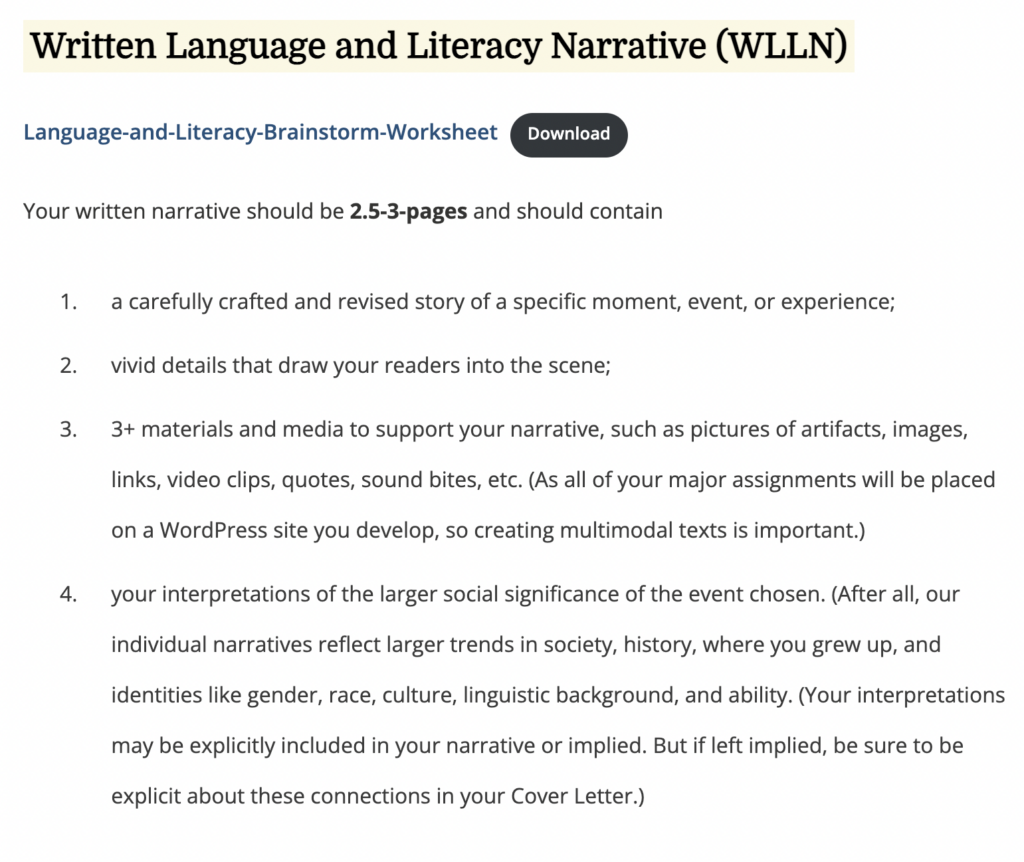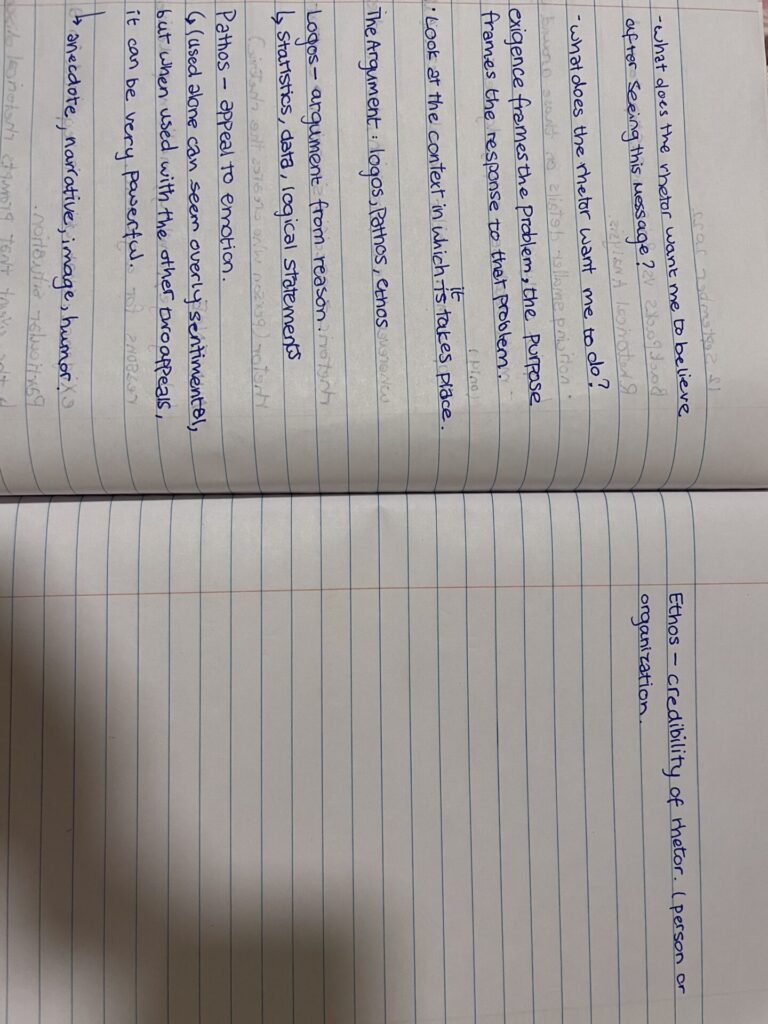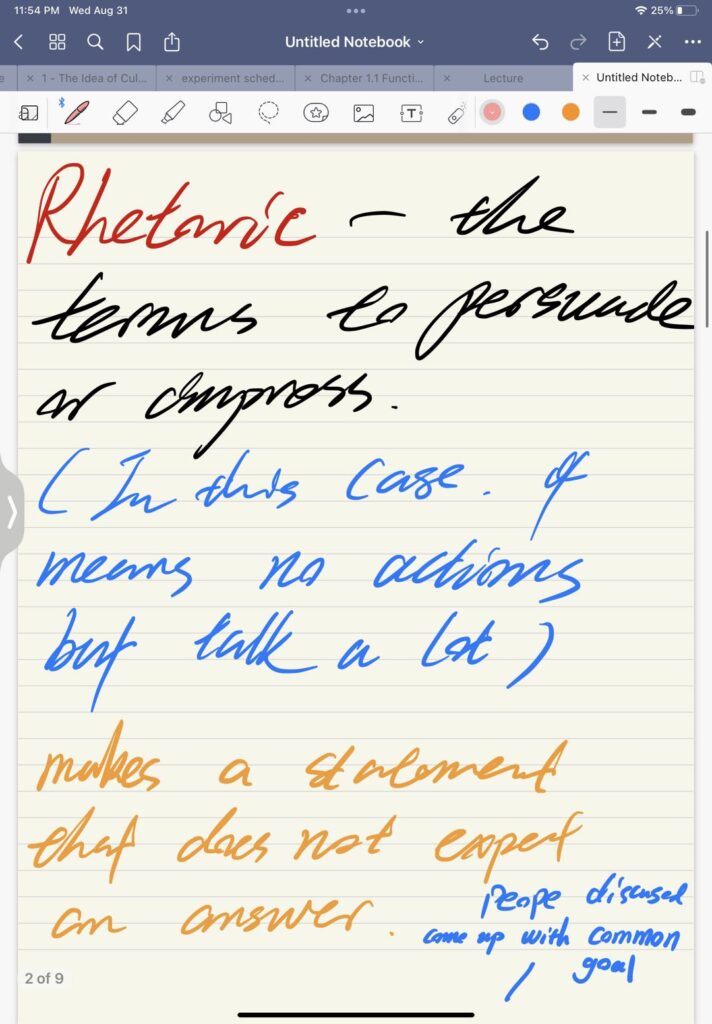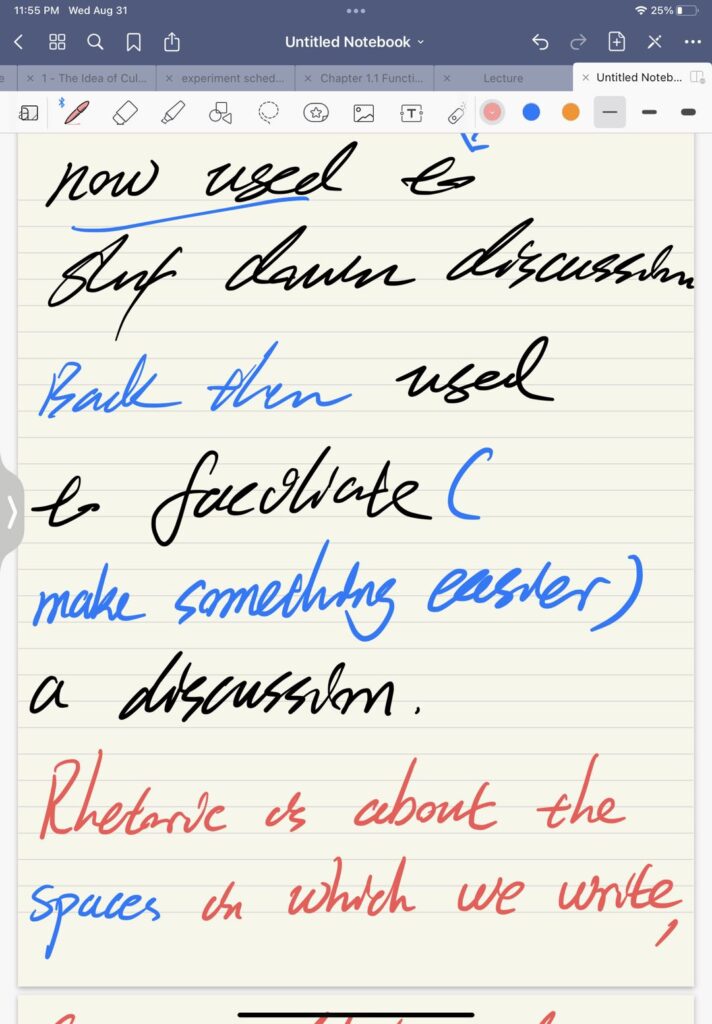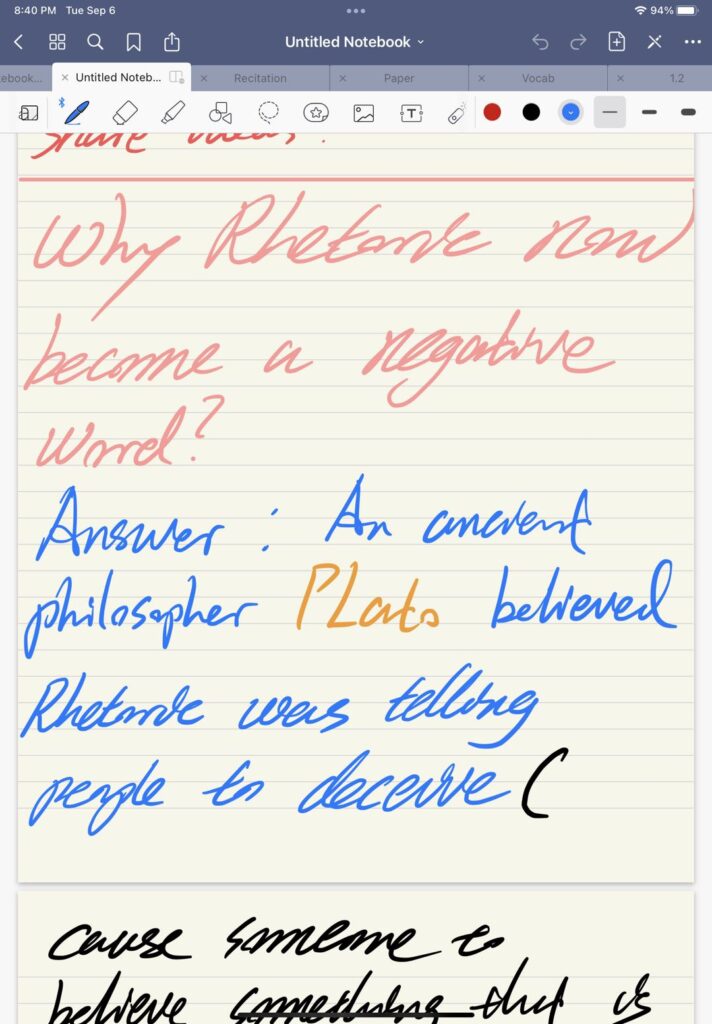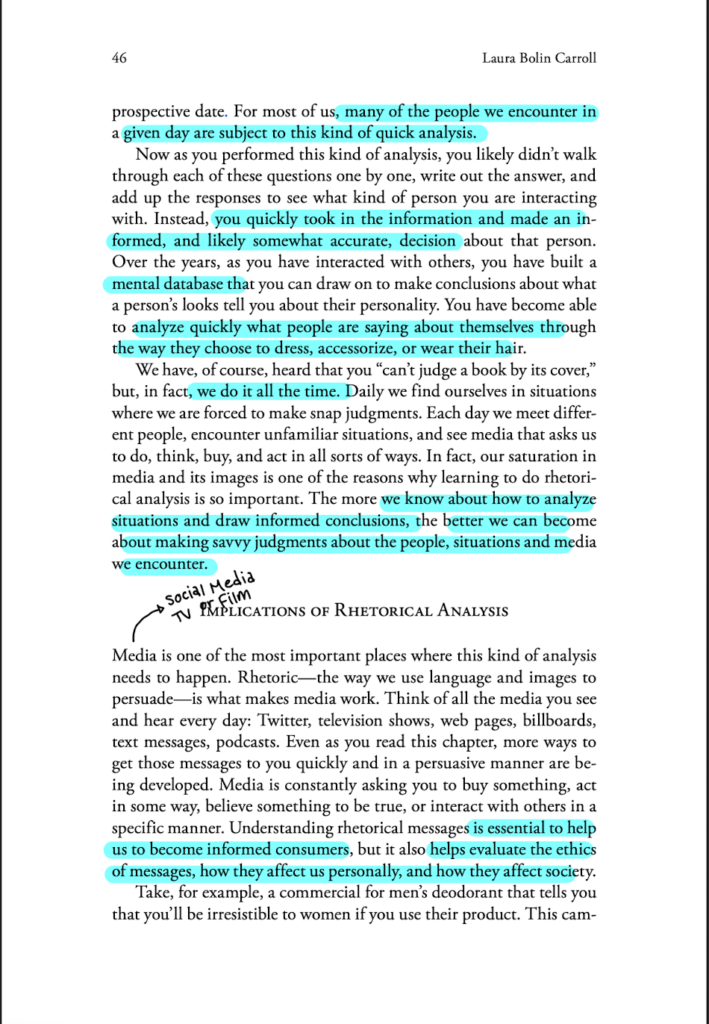Digital Receipt #2 (Week #2 Backpacks)
When remembering a moment with rhetoric used was an ad I saw in Youtube done by Peta I think. It started with an owl screaming which probably appeals to pathos. Due to no one liking to hear an animal in pain and then would proceed by mentioning how experiments were being done with the owl, while the owl screaming is still being played. Another instance of rhetoric I saw being used was St Jude Children’s Research hospital with how they show children in hospitals and having small interviews with them. This appeal to pathos with how children in pain ain’t great to see. Possible people who are affected by that could be parents because of how parents tend to be close to children so it would appeal to their hearts. I would think in a rhetorical way when I choose what to wear to head outside sometimes. This is mainly done by me wearing long sleeves more than short sleeves. A bit of that has to do with me not wanting to show too much skin and being self conscious of what others think. During some ads I watch on tv tend to sell medicine or devices that could help out people. They would always mention that the product is always approved by a doctor which is a sign of ethos. That’s due to a credible person approving of the item which is a doctor, who’s fields are usually on people’s health. Cell phone services would make ads saying they have great networks by showing how far a phone can be used without WIFI. The rhetoric used would be logos because they show a map of the United States and how their service would cover most of the place, they even put side by side with another competitor network service to show they have the better service.

